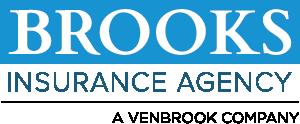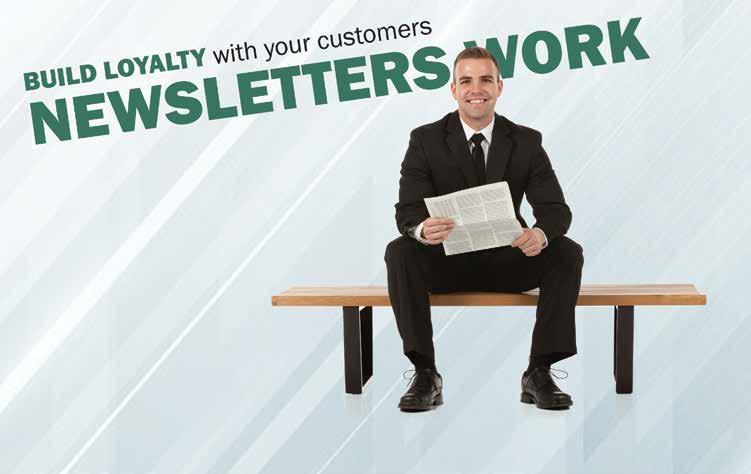

PERSONAL & COMMERCIAL INSURANCE that protects what matters most for generations

to come.
Your customers deserve peace of mind with customized coverages from The Concord Group. With a wide range of optional enhancements, we offer policies that will meet their needs.
Find out more at ConcordGroupInsurance.com

Adapt
Statements of fact and opinion in PIA Magazine are the responsibility of the authors alone and do not imply an opinion on the part of the officers or the members of the Professional Insurance Agents. Participation in PIA events, activities, and/or publications is available on a nondiscriminatory basis and does not reflect PIA endorsement of the products and/or services.
President and CEO Jeff Parmenter, CPCU, ARM; Executive Director Kelly K. Norris, CAE; Communications Director Katherine Morra; Editor-In-Chief Jaye Czupryna; Advertising Sales Representative Kordelia Hutans; Senior Magazine Designer Sue Jacobsen; Communications Department contributors: Athena Cancio, David Cayole, Patricia Corlett, Darel Cramer, Anne Dolfi, Scott Finnegan, Kordelia Hutans and Lily Scoville.
Postmaster: Send address changes to: Professional Insurance Agents Magazine, 25 Chamberlain St., Glenmont, NY 12077-0997.
“Professional Insurance Agents” (USPS 913-400) is published monthly by PIA Management Services Inc., except for a combined July/August issue. Professional Insurance Agents, 25 Chamberlain St., P.O. Box 997, Glenmont, NY 12077-0997; (518) 434-3111 or toll-free (800) 424-4244; email pia@pia. org; World Wide Web address: pia.org. Periodical postage paid at Glenmont, N.Y., and additional mailing offices.
©2023 Professional Insurance Agents. All rights reserved. No material within this publication may be reproduced—in whole or in part—without the express written consent of the publisher.

IN BRIEF
The Generations
The up-and-coming generation (Gen Z), who are they?
By 2025, Generation Z will account for 27% of the workforce. They are the first generation that can’t remember life before the internet (analog cameras, CD players or paper maps).
Affecting milestones: the 2008 global financial crisis, the COVID pandemic and the war in Ukraine. Generation Z is also known as: Post-Millennials, iGeneration, Plurals, Gen Zers.
Generational differences
Gen Z could change jobs up to 10 times between the ages of 18 and 34. They are less likely to work up the career ladder at one organization (compared to previous generations). Almost 50% of Gen Z workers value work-life balance, remote working and flexible leave.
As employees, studies show Gen Z prefers
Face-to-face communication
• Written communication may be difficult to decode.
Generation Alpha
Born 2010-Now
(Ages 0-13 years)
Generation Z
Born 1997-2009
(Ages 14-26)
Millennials
Born 1981-96
(Ages 27-42)
Generation X
Born 1965-80
(Ages 43-58)
Boomers
Born 1946-64
(Ages 59-77)
Silent
Born 1928-45
(Ages 78-95)
Individual work
• They can showcase their abilities.
How to engage Gen Z
Build a diverse and inclusive work culture
• Limit the amount of switching between different work apps
• Re-examine your organization’s values
• 80% look for companies whose values align with their own
The year each generation is born:
2010 → The iPad was introduced
1997 → The Lion King debuted on Broadway
1981 → Post-It Notes launched
1965 → U.S. states in the Northeast/Canada got hit by blackouts (lasting up to 13.5 hours)
19 46 → Tupperware is introduced to U.S. consumers
Five ways to attract and keep top insurance agency talent
Building a strong team is a crucial part of running a successful independent insurance agency. This is especially true in times of economic uncertainty. Having the right people in place can help your agency continue to win when things get tough. With recent shifts in the U.S. market, it’s a good time for insurance agency leaders to rethink strategies for employee recruitment and retention. In a recent study, more than half of the surveyed agency principals said finding and recruiting talent is one of the biggest challenges they face in managing their agency.1 The survey also asked insurance agency employees about the top things they look for in a job. The answers reveal some key ways agents can attract and retain talent.
No. 1: Focus on stability
Employees across industries want to feel that their job provides stability. With job-seekers facing a tough market in 2023, the stability of the insurance industry could help agencies attract candidates from outside the industry. Insurance has a lower unemployment rate than other industries and a lower rate of job hopping, which suggests higher job satisfaction. Data from the Bureau of Labor Statistics shows that employees in this industry tend to stay in their roles longer than workers in other industries.2
No. 2: Offer parental leave
One in four agency employees (and more than one in two millennial employees) is a parent to young children.3 So perhaps it’s not surprising that agency employees listed parental leave as one of the top things they want in a job. Robust family leave policies can help agency owners retain employees and support their career growth through different stages of their lives. The recent Agent for the Future report on the state of women in insurance agencies found that parental leave and options for flexibility can be especially important in retaining women, who make up nearly 60% of agency employees.4
No. 3: Create paths for career growth
The insurance industry offers opportunities for growth in a variety of career paths. Offering continuing education and career development opportunities can help agency owners increase employee engagement and satisfaction. It also can help them attract the next generation of talent. More than half of the millennial and Gen Z agency employees surveyed said they aspire to be a leader in their agency, and 62% listed “inspiring leadership to provide mentorship and career guidance” as the top characteristic
they want in a job.5 Investing in mentorship programs, networking opportunities and ongoing training can help agency owners create a pipeline of qualified leaders by empowering employees to reach their full potential.
No. 4: Provide flexibility
Most agency staff members are satisfied with the flexibility their agency allows. However, agency employees would prefer to work remotely more than they do currently. About half of agency employees reported that they are back in the office full-time, but 62% said they would prefer to work from home at least one day a week.6 Agency front-line staff members are more likely than leaders to say they are more productive, happier and have a better work-life balance when they work from home. Offering options for flexibility may help agency owners increase employee satisfaction and attract job candidates.
No. 5: Invest in your community
Insurance agency talent is drawn to companies that are highly involved in their communities. This is good news for independent insurance agencies.
Advertising things like community involvement, parental leave and career development opportunities in job postings could help independent insurance agents attract candidates from inside and outside the industry who share their agency’s values. And, investing in benefits that make employees feel secure and supported will help agencies attract top-tier talent and create resilient teams that are dedicated to seeing the agency succeed.
Canales is SVP and field executive of the Northeast region for Liberty Mutual Business Lines and Safeco Insurance. He is responsible for Safeco’s personal lines and Liberty Mutual’s business lines growth and profitability within the region.
1 Liberty Mutual and Safeco Insurance surveyed more than 1,100 independent insurance agency leaders and team members for its 2023 Agency Growth Study (bit.ly/45Lczp3).
2 Business Insurance, 2022 (bit.ly/43KBJSM)
3 Liberty Mutual and Safeco Insurance, 2023 Agency Growth Study (bit.ly/45Lczp3)
4 Liberty Mutual and Safeco Insurance, 2023 (www.agentforthefuture.com/women2023)
5 Liberty Mutual and Safeco Insurance, 2023 Agency Growth Study (bit.ly/45Lczp3)
6 Ibid.
Competing for emerging talent: What the talent wants
Grace Grant, executive director, Gamma Iota SigmaWhat does the next generation of insurance talent want from the industry? This is the question independent agents are considering as they look to optimize recruitment and retention strategies and future proof their agencies. The best answers come from those in the next generation.1 These insights can help agents adapt their strategies and approaches to their next-generation workforce.
Cash is not king. While most respondents said multiple factors influenced their choice to pursue an insurance career, respondents ranked earning potential and career stability as two top influencers. But earning potential isn’t limited to dollars and cents. When asked to rank their compensation considerations, health care topped the list at 48%, well above salary (31%). This is consistent with prior surveys and something independent agents should consider as they develop benefit plans for their employees.
Culture matters—but so does industry. Nearly all (98%) survey respondents majored in either actuarial science or risk management. It is no surprise that actuary—in both life/health and property/casualty— ranked as the top insurance role graduates are pursuing. P/C roles as underwriters and brokers ranked third and fourth, with reinsurance underwriting and risk manager completing the top six. Agent ranked ninth (12%).
And while industry specialty and segments are important, what is more important, according to the respondents, is corporate culture. Students ranked culture as their No. 1 differentiator when comparing companies. Agents with a strong corporate ethos can gain a recruiting advantage. Timing is (almost) everything. Another trend to consider is the timing of job offers to prospective hires. The survey indicates a significant disconnect in the recruitment timeline. Nearly 40% of students expect fulltime employment or internship offers to arrive between August and October, while about half of employers anticipate making those offers before school starts (between May and July). As such, employers should communicate clearly with prospective hires.
Hybrid, not remote. Does the work environment matter to younger employees? Yes. Two-thirds (63%) of students said they prefer a flexible work environment. Agencies already offering hybrid work models may have a leg up on their competition for talent.
Raising awareness. When graduates were asked if they originally intended to pursue an insurance career, 75% said yes—a 10% drop from 2021.
Expand momentum
Here are three ways independent agents can raise awareness and expand the momentum of emerging talent pursuing insurance and risk management as a career:
No. 1: Create meaningful internship opportunities. About one-quarter of respondents ranked internships as the most meaningful investments companies can make in students. Internships not only raise awareness, but they also can inspire young talent to join a company for the longer term. More than half (54%) of students say they seek internships to find full-time employment.
No. 2: Attend career fairs. When asked to list their preferred job search or engagement opportunities, students selected both in-person (54%) and virtual (57%) career fairs as their top choices, well above in-person on-campus interviews (16%) or online information sessions (14%).
No. 3: Embrace diversity, equity and inclusion. While some agents report experiencing “DEI fatigue,” diversity, equity and inclusion remains important for younger workers. Sixty-one percent of respondents said they felt there was sufficient diversity in their internship or fulltime employment. The takeaway for agents: Find ways to work through DEI fatigue and invest in additional initiatives that will continue to enhance your agency’s diversity.
Independent agents may not have the same resources as many carriers when it comes to attracting and retaining the next generation of professionals. Yet by listening to the needs of students and investing in the right areas, independent agents can create talent strategies that will help them level the playing field.

Grant is the executive director of Gamma Iota Sigma (www.gammaiotasigma.org), the insurance industry’s premier collegiate talent pipeline.
1 Gamma Iota Sigma, annual Recruiting Survey Report. Compiled responses from nearly 1,200 students and recent alumni representing 102 colleges and universities throughout North America.
This article is adapted from “What the talent wants, how to compete for it,” which can be read in its entirety on PIA Northeast News & Media (blog.pia.org).




THEOPHILUS ALEXANDER

Government & industry affairs specialist, PIA Northeast
Gen Z: Myths vs. facts
Generation Z—colloquially known as Gen Z—is the demographic of young adults born between 1997 and 2009, the generation after millennials. This generation is known as digital natives because these techsavvy young adults were raised on the internet and social media, and either do not know or cannot remember what life was like having a Motorola Razor, T-Mobile Sidekick, or any variation of the infamous BlackBerry.
In case you could not tell from the iconic group of phones that I listed, I was born in the spring of 1996—the tail-end of the millennial generation and I should escape the Gen Z label narrowly. However, I have been referred to as a Gen Zer, which makes the micro hairs on my scalp (I’m bald) perk up because I proudly derive from the AOL Instant Messenger and YouTube-MP3 converter era. I distinctly remember afternoons after school, connecting one end of the ethernet cable to the router and the other end to the laptop, logging on to AIM, and scouring YouTube looking for the newest music to pirate onto my iPod Touch.
There have been many articles written about Gen Z—what they are like, what motivates them, and how to best integrate them into the workforce. However, it is important to dispel fiction from fact. Here are the top three myths about the generation with the last remaining letter in the Latin alphabet, and some possible truths that can help you adapt to having another generation in your agency.
Myth No. 1: Gen Z is lazy and entitled
Just like their millaennial predecessors who previously wore the entitled label, Gen Zers are nothing like their parents and grandparents when they were young adults. They have re-evaluated their priorities and they are demanding more from their employers and careers. Gen Z is seeking work that aligns with their values and provides opportunities for growth and development.
We witnessed the Great Resignation in 2021—when approximately 47.4 million people voluntarily resigned from their jobs,1 three million people retired early,2 and approximately 16.1 million people experienced unemployment at some point during that year.3 While this exodus was attributed to the global COVID-19 pandemic, data suggests that this dramatic workforce change began before it.
Fact: Gen Zers are looking for flexibility and connections. Conditions like societal disagreements over mandates and restrictions, flexible work arrange-
ments, and entrepreneurial opportunities also contributed to the mass departure of employees. As such, employers who neglect to adapt to the changing needs and values of Gen Z may find themselves struggling to attract and retain top talent in the years ahead. It is crucial for employers to listen to the needs of this generation and create a work environment that fosters growth, purpose and fulfillment. Agency owners should work to create mentorship programs that provide young employees with opportunities to enhance their professional development. Not only do these programs provide young employees with direction and feedback, but they strengthen office culture and promote camaraderie between older and younger employees.
Myth No. 2: Gen Z are job hoppers

At the height of the pandemic, many seasoned employees enjoyed the once-in-a-lifetime opportunity to work from home. However, for Gen Z and some millennials, the COVID-19 lockdown and the introduction to remote life disrupted the fabric of our daily lives and shifted the ways in which we learned, worked and interacted with one another.
Gen Zers became advocates for remote work, so much so that this
generation has no reservations about quiet quitting—doing the minimum job requirements and putting in no more time, effort, or enthusiasm than necessary—or resigning from a job without giving the traditional two-week notice if working conditions are not up to their standards.
Fact: Gen Zers want balance and boundaries. In addition to flexible work, Gen Z prioritizes many benefits that previous generations overlooked or were previously excluded from including supporting physical and mental health; promoting diversity, equity, and inclusion initiatives and accountability; and maintaining a healthy work-life balance. This generation sets boundaries, and if those boundaries are breached, this generation of young adults will not hesitate to leave and find gainful employment elsewhere.
Myth No. 3: Work needs to be fun
As a millennial and young professional, I can attest that being in certain workplaces can feel like an extension of college. When you and your colleagues are all around the same age, blurring the personal and professional lines at work can be difficult. That, at times can be advantageous as it contributes to stronger trust between teammates, improves communication, and strengthens employee engagement and retention if employees can feel connected through friendship.
Fact: Gen Zers want to be challenged. While it may be misconstrued as fun, young employees simply want to be challenged, engaged, taken seriously by their colleagues and know that their work holds value and substance. Employers can take several steps in their workplaces to challenge employees and maximize their engagement.
First, employers can create a workplace of transparency and open communication by encouraging employees to express their feedback, ideas and opinions, which enables employees to feel heard and valued.

Hiring made easy
Second, employers can offer their employees flexible work arrangements, including working remotely or allowing employees to adjust their work schedules to help accommodate employees’ personal needs.
Third, employers could offer professional learning and trainings, such as conferences and webinars to boost employee engagement.
Lastly, officially recognizing and rewarding achievements also can go a long way in cementing gratitude for your employees.
Conclusion
Ignore the myths of Gen Z. Instead, focus on what those individuals in this generation are truly looking for in a workplace environment. This can lead to a better understanding of this demographic, which can result in improved recruitment and retention, productivity, innovation and customer satisfaction.
Alexander is PIA Northeast’s government & industry affairs specialist.
1 CNN, 2022 (cnn.it/430RPYo)
2 Bloomberg, 2021 (bloom.bg/3BFBPzk)
3 U.S. Department of Labor, 2022 (bit.ly/435zpFG)
Reach
• Thousands of member agencies in New York, New Jersey, Connecticut, New Hampshire and Vermont.

DIGITAL
PIA.org


Where insurance professionals go for information, education, legislation updates and products and services to help with preservation.

• 10‑15,000 visits each month.

















• Full- or half-sized ads available.



PIA digital news

• Distributed as a member-exclusive benefit.
• The primary source for PIA members’ industry news.




















PIA Magazine
• Gives readers power to grow their business in a competitive marketplace.
• Distributed 11 times each year, each issue focuses on a topic specific to the insurance industry.
• Single- and multi-state options.
Contact: Kordelia Hutans at khutans@pia.org | (800) 424‑4244, ext. 338
2500 D 2023
A fully automated surety bond MGA to fit your needs.
Driven by proprietary technology, Propeller Bonds is changing the way insurance agents market bonds across various platforms using their unique agency URL .
Propeller Bonds is an insurtech MGA/MGU equipped with an instant issue surety bond platform housing 7,000 Contract, Commercial, and Fidelity surety bonds.




















Agency URLs do not require a login and can be shared across social media, email, and wed-based platforms for quick and easy access.

 VANESSA MATSIS-Mc CREADY
VANESSA MATSIS-Mc CREADY
Associate general counsel and vice president of HR services, Engage PEO

Stay competitive with modern benefits
In the AppleTV+ show Severance, employees are split—their personal selves literally are left at the door when they swipe in for work. As they get to their desks, employees transition into their work selves, leaving the burdens of their personal lives at the door. In real life, successful employers address their employees as whole people. Every generation in the workplace has its different stresses and it is naïve to think they do not spill into the workplace.
Employers who want to have an engaging workplace, attract and retain top talent, and reduce workforce burnout must evolve with the needs and wants of their workforce. Gone are the days when an employer can focus only on reducing workplace stress to address burnout. Looking at the employee as a whole person is much more successful in creating a loyal, engaged workforce and reducing burnout in the workplace.
Agency owners need to offer a full suite of benefits catered to a multigenerational workforce that fits with their budget. Benefit costs can range from minimal to higher costs for the employer, but it is vital to keep in mind that the cost of recruiting, hiring, and training a new employee is significantly higher than retaining an employee—not to mention the institutional knowledge that is lost and potential loss of clients when an employee leaves. Recent studies have shown that these uncertain economic times have led to two trends:
First, a study by Care.com found almost half of U.S. employers were considering reducing their employee benefits. This is a slippery slope likely resulting in employee departures that ultimately increase costs.
Second, employee burnout is having a major impact in the workplace. Research by Eagle Hill Consulting found that almost half of U.S. workers say they are burned out. Why? It is not just work. While workload and feeling understaffed are on the list, they reported that work-life balance was one of the top causes. Every generation makes a major impact on the workforce, and today’s younger generations are no exception. Millennials and Gen Zers are demanding better work-life balance and holding employers accountable making what were once options, expectations. This is evident not only in benefit offerings but also with significant employment legislation changes. So, how can employers calibrate their benefit offerings to address the needs of the current workforce, reduce burnout and attract/retain top talent?
Financial fitness
Economic uncertainty, inflation, and stark cost of living increases around the country, combined with student loan debt, mortgage debt, rising taxes and the like are putting significant pressure on employees. Employers can offer financial fitness benefits like:
• Student loan debt repayment, in which the employer matches or contributes to the repayment, is a gold standard benefit.
• Tuition reimbursement and 529 College Savings Plans help the multigenerational workforce achieve their personal and familial goals.
• Retirement savings plans and 401(k)s are an expectation of today’s workforce, and sometimes required by law. Employer contributions to retirement plans show employer commitment to the workforce.
[EDITOR’S
NOTE:
If you don’t offer your employees a 401(k) plan, or you are looking for a better plan, consider the PIA 401(k) Plan. For more information, visit www.tagcobrand.com/pia.]
• Profit sharing and stock-option plans not only help employees buy-in, but they help them build long-term wealth.
• Financial wellness coaching is increasingly popular, as are hosting lunchand-learns regarding personal finance and discounted access to financial planning services.
• Financial assistance with other work-life programs (discussed later in this article), discounts or reimbursement for tax preparation services and cell phone or internet expenses (sometimes legally mandated) are peppering the field of financial benefits.
Health and wellness
Many U.S. employers are required by law to offer medical insurance to their employees. Many states have other required programs like workers’ compensation, short-term disability and paid family leave, which are funded through payroll taxes. Recent legislation has increased the footprint of these programs, reducing requirements for coverage, and increasing the number of eligible employees. Even though many state mandated leave programs are funded through payroll taxes, employers often incur hidden costs for temporary employees and for overtime to cover for the employee on leave.
Mental health coverage is in high demand, especially among members of the younger generations who are more likely to openly discuss their concerns and what they need to address mental health. Covering telehealth visits and mental health benefits goes a long way to supporting employees. Employee mental health is supported when the employer provides access to time off and creates an inclusive and diverse workplace. These also create a safe, engaging, and productive workplace.
Employee Assistance Programs are a great tool to stave off burnout, and often have a variety of experts to help with various concerns.
Employers who go further than these required offerings see better traction with their employees and a better return on investment. Supplemental health insurance options are popular and help an employer speak to a range of generations. Enhanced short-term disability, vision, dental (including orthodontics), hospitalization coverage and cancer disability insurance are attractive to employees at different seasons of their lives for different reasons.
Offering access to benefits experts, who can consult with employees to help them choose the best mix of benefits for their needs is another great way to help employees.
Wellness programs not only help improve the health and lifestyle of the workforce, but they also can have a multifaceted impact on the employer’s bottom line by increasing productivity, reducing unplanned absenteeism, and decreasing health care insurance cost.
While some companies may choose to add a meditation room, yoga studio, napping pod, or gyms to the office, and others may choose to lease space for these offerings, employers can choose a lower investment option also. Offering gym or health class reimbursements, meditation apps, insurance coverage, discounts or on-site access to chiropractors, acupuncturists, and masseuses can yield similar benefits.
Chef-catered lunches calibrated for different lifestyles or access to a nutritionist are excellent wellness benefits. Employees who avail themselves of these bene-
fits often report more productivity and enthusiasm for work, and they also reduce the costs of an employer’s medical health coverage costs due to a healthier workforce.
Work and family
Work and family benefits are an important component of reducing burnout and increasing retention. Paid family leave is an expectation for today’s workforce. Historically, it was limited to maternity leave. Now it is legally mandated in several states—including Connecticut, New Jersey and New York. Even when it is an employer-driven benefit, it applies to care for many family members, often including siblings’ and grandparents’ or grandchildren’s serious health conditions, or bonding with a child. As a result, many employers go further than the laws and offer paid parental leave and/or paid family leave to care for other family members.
Paid sick time off is impacted by legislation and employee need. Historically, employees might have a small number of sick days, particularly managers or exempt employees. Such time off was less accessible to nonexempt, part-time, and hourly employees. However, due to employers’ desire to retain talent, have a healthy workplace, and when applicable, comply with the law, many employers now ofer paid sick time off for preventative care or illness for the employee, and to care for an affected family member. Paid time off and floating holidays, especially vacation time—while not generally legally mandated—is one of the top benefits a prospective employee looks for when interviewing with a business. An agency that does not offer paid time off will have a difficult time recruiting and
retaining its workforce. Employers are offering unlimited time off. Floating holidays help employees choose the holidays that are important to them while helping the employer meet business needs.
Sabbaticals (both paid and unpaid) are having a comeback. Employees take a chunk of time off, (up to three months) to reset, pursue hobbies or travel, and return refreshed.
Volunteer days—whether agency organized or at the individual level—are a popular perk.
Workplace perks can have a big impact on both financial fitness, and work and family. To woo employees to campus, assistance or discounts for chores (e.g., dry cleaning, laundry, grocery shopping and even home cleaning services) are becoming more desired. Access to concierge-type services (e.g., travel specialists who can plan and book your next trip, or entertainment concierges that can get coveted event tickets) may pay for themselves by giving employees more time to focus on work, leisure activities and health. The latter two have been found to directly impact productivity and creativity in the workplace. Locating the office in a desirable area with access to a vibrant community can help get employees back to the office.
The pressures of caregiving are real for members of all generations. Many employers offer a Dependent Care FSA that allows employees to allocate pre-tax dollars. Businesses can offer discounts or partial reimbursements for child care, elder care, adult care, and even pet care. Backup child or elder care, or allowing an employee flexible work hours is impactful.
Access to Medicare experts and estate planning services can help employees and caregivers plan for
the future. EAPs and curated services help individuals find assisted living or nursing homes, and can reduce a large stressor.
Employers should view the vast world of benefit options as an important part of today’s employer-employee relationship. These benefits are not out of reach for any sized employer, and many of the benefits can be achieved at various levels of investment. A great broker or professional employer organization can increase access to these benefits for small- and mid-sized businesses around the country.
Matsis-McCready is associate general counsel and vice president of HR services for Engage PEO.
We have the solutions YOU NEED
1,724 member inquiries
28 contracts reviewed
3,814 tool kit hits
4,955 QuickSource requests
1,673 Ask PIA hits
1,216 MarketBase™ requests
PIA membership brings with it a wealth of benefits for the professional, independent insurance agent or broker— but the personal assistance of PIA’s Industry Resource Center alone is worth the investment.
“I am so proud of being a PIA member!”
—Robert Charles Robert Charles Brokerage Inc.

PIA MEMBER‑EXCLUSIVE BENEFITS
Let us help you build lasting relationships with companies, managing general agents and general agents. The Appointment Access Program will connect you with quality MGAs and GAs looking to appoint in your area, while the Agency-Company Appointment Program can connect you with carriers.


Struggling with finding a specialty market? With PIA MarketBase™ , you don’t have to search blindly—or worse—turn away this business. We can connect you with nearly 100 firms offering more than 2,100 specialty risk categories.





A DIFFERENT VIEW
Adapt your agency now to attract and retain new employees
s the baby boomers retire, the insurance industry is undergoing a generational seismic shift, creating a demand for millennials and Gen Zers to fill 400,000 vacant positions.1 These younger workers will make up 60%—40% millennials, 20% Gen Zers—of the workforce in 2025,2 bringing their passion, dynamism, and extensive experience with technology to the industry, which is poised for change. They understand that the world is rapidly changing and want to be part of the transformation.

One of the defining characteristics of this new generation of professionals is their focus on and knowledge of technology. They are the first generation to have grown up in a world where technology is ubiquitous. They understand its power and currently use it to streamline processes, reduce costs, and improve the customer experience. They know that technology is not a threat, but rather an opportunity.
Another core characteristic of these younger workers is their commitment to social responsibility. They understand that the insurance industry has a critical role to play in society, and they are committed to using their skills and expertise to make a positive impact on the world. These workers are not just focused on profits; they are focused on people.
The next generation of independent insurance professionals is more diverse than any previous generation. They come from a wide range of backgrounds and cultures and bring fresh perspectives to the industry. They are not afraid to challenge the status quo and are not bound by tradition. They are forging a new path for the industry, one that is more inclusive, diverse and global. In essence, they are the perfect change agents, who are poised to transform the industry. They see beyond the industry’s limits into its promising, exciting, and unlimited future. The insurance business, which started a hundred years ago as a few niche markets, has now evolved into a global industry that is racing to address the new risks that arise as the world’s climate, politics, health care, technology and AI rapidly evolve.
As someone who has researched and worked in this industry, I am certain that a compelling future for insurance agencies depends on the next generation of professionals. They want to challenge themselves, push boundaries, and find creative, and novel ways to grow, expand, and move the industry forward. The question is whether the industry is truly ready to warmly welcome them.
Most agency owners do not know how to make insurance an attractive career option for millennials and Gen Zers. Since most businesses covet these employees, insurance agents have fierce competition for them from more progressive industries. Can the agency system reinvent itself to offer a compelling and bright future to win some of these innovative, growth-oriented, and eager-to-change-the-world employees?
Significant mismatches
Let’s begin with the stark realities. To attract and retain the best talent, the industry needs to address several significant mismatches between its traditionally perceived values in its employees and culture, and what the new generations need from an employer.
First, the insurance industry has a reputation of being stuck on the status quo and resistant to change.
Second, agency owners need to hire talented employees with potent innovative ideas and not just look for employees who will maintain the status quo. Now the industry needs high-quality employees who are skilled, smart, technologically savvy, and eager to make a difference.
Third, the industry needs to develop its employees and its technology. Traditionally, it has lagged behind most other industries and has offered less attractive careers to the new generations.
Fourth, the insurance industry is perceived as having a culture that is rigid, transactional, and top-down, which stifles innovation.
And, last is its personnel. The employees may need to update their dated, rigid, and inaccurate mindsets. Some employees need to exude more pride in their careers and truly know the value of the services, products, and advice they provide. I have seen talented and smart people who, when asked what they do for a living, mumble the words insurance agent under their breath, and then change the subject. I am not sure of the origin of this insecurity, but it must be eradicated to develop a new mindset about insurance, so younger people will see it as a compelling and impressive career option.
To address these serious mismatches, the industry needs to reinvent itself to offer a promising and exciting future to attract and retain topnotch employees.
A business model with attractive outcomes
To transform the industry’s people and culture, a new business model, which is described in McKinsey Global Institute’s February 2023 report, Performance through people: Transforming human capital into competitive advantage, may provide the guidelines for agencies to accelerate their growth and modernization. It has four components.
One: To teach agency owners how to excel at creating opportunities for their employees to continuously develop their skills.
Two: To emphasize building human capital to generate consistent earn-
ings and be more resilient while attracting and retaining talent.
Three: To prioritize developing and managing employees while delivering top-tier profitability.
Four: To focus on how management must challenge and empower their employees while fostering bottomup innovation.
A deeper dive into each component
The insurance industry has the potential to be lauded for making a positive impact in the world: It helps people when they need it the most, provides them with peace of mind, and protects them from life’s uncertainties. But to do so, it needs the skills, expertise, and passion of the next generations.
Skill development. The first component fits well with what the industry needs and what the millennials and Gen Zers want. Investing in employee skill development is essential for the industry to close the gap with other industries and offer attractive career options to younger workers. Skills learned on the job account for 46% of an employee’s lifetime earnings.3 Thus, constant skill development helps to propel employees into higher earnings brackets while providing the agency with skilled people ready to handle higher-level positions.
Therefore, agents need to shift their focus from accepting good candidates to only accepting high-quality candidates who value learning and growth. This entails agency owners being willing to make significant investments in two of the insurance industry’s weakest links: their employees and technology.
Millennials and Gen Zers are technologically savvy, so they are posi-
tioned perfectly to make remarkable contributions to accelerate the industry’s adoption of technology. They do not have the blind spots that some baby boomers had regarding the future role and limitless possibilities for technology. Building human capital. The second component of this business model is building human capital. It will result in agencies having more consistent earnings and greater resilience during a crisis. Agency owners who excel at developing and managing their people will be in the top-tier profitability consistently and they will have an employee turnover rate at least 5 points lower than their competitors.
The biggest hurdle the industry faces to be a builder of human capital is its culture. It has been inflexible, transactional, authoritative, and incorporates minimal employee development, trust, or engagement. The culture that will attract and retain today’s workforce is almost the opposite: a healthy, engaging, and vibrant culture that will inspire and energize employees.
The perception is that agencies may offer little in the way of career-pathing. Millennials and Gen Zers want a career that will train them regularly, and thus improve the odds that they will be employable three, five, and seven years from now. These younger workers have immense student debt and have delayed marrying, buying a house, and having children, in order to meet their debt payments.
Without a solid career path, they will look at other industries that offer a career as an integral part of their business. I know a few highly talented people who reluctantly left an agency and a carrier because there were few attractive opportunities for advancement.
Their human development and profitability would place these newly revamped agencies in a far stronger position than their competitors when it comes to weathering disruptions and crises. In essence, they will have turned their human capital into a potent competitive advantage. This would make an agency’s profits much less dependent on the carriers’ contingencies and more on their own employees’ skill development.
Managing top-tier profitability. The third component is to prioritize developing and managing employees to deliver top-tier profitability. This will require agencies with traditional top-down management to embrace a more participative, inclusive, and transparent management style.
These new employees value relationships, and thus need a strong, respectful, and open relationships with their managers. Since relationships are built on trust, and managers usually are promoted because of their technical skills rather than their interpersonal skills, most managers are less likely to know how to create trust. Their role needs to be redefined so they understand that they are coaches, and the agency owners must provide them with regular training so they can be very effective.
The millennials and Gen Zers want their work to have purpose and meaning, and to be socially conscious. Thus, they need to be heard, asked to contribute their ideas for new services or products and have a seat at the table when issues arise that will impact them. They are both the most innovative and creative generation ever. If given the culture they need to thrive, these employees will uncover opportunities for growth and expansion.
Challenging, empowering, innovating. The fourth component is to develop a management style that challenges and empowers employees while fostering bottom-up innovation. The leadership needs to inspire inclusivity and diversity, build trust and support, and be passionate about making its employees the absolute best in the business.
These younger employees will want a seat at the table much sooner than you think is appropriate. They will balk at taking a back seat to someone who has more experience but who lacks the key skills that are critical to a project. Allow them to participate and be impressed at their insights.
These employees have a knack for fostering connections with people, understanding how to use social media to grow a business, collaborating easily with others, and helping make the workplace a thriving community. If you are willing to empower these younger workers, they will help grow your agency in leaps and bounds.

Time is of the essence. This is a critical point for the agency owners to listen to new and diverse ideas and opinions. Forward-thinking agents will realize that to remain competitive in this fast-paced world of accelerating change, they need the new generations’ skills, ideas, and passion.
Agency owners who make the changes suggested here, will find that their agencies will be more robust, healthier, and well-positioned to tackle the upcoming challenges head-on without missing a beat. So, if you want to be ahead of your competitors, take a leap of faith and invest in your people and technology. It is a bold and wise decision that will minimize the fear of the future and replace it with an energized, clear, and confident path forward
complete with challenges, wins, and celebrations.
Thomas is the country’s leading employee and client retention expert with over 33 years of experience, mostly in the property/casualty insurance industry.

Thomas Consulting uncovers novel and innovative ways for businesses to attract and retain fiercely loyal employees and clients. Reach her at LynnThomas@thomasconsultingwins. com or (781) 899-4210.
1 A.D. Banker & Co., 2022 (bit.ly/3OnyV9P)
2 Creditors Adjustment Bureau, 2022 (bit.ly/3IqEzUU). Although some sources indicate that Gen Zers will make up 27% of the workforce by 2025 (Zurich, 2022, bit.ly/3Mk2pTs).
3 McKinsey & Co., 2022 (mck.co/3OjlgAJ)
Alpha Northeast—an agency network and affiliate of the nation’s second largest network, ISU Insurance Agency Network—partners with insurance agencies to help them grow their businesses.
When you combine forces with us:
100% commission payout from non-contracted carriers & profit share eligible from first dollar
You’ll have access to the top national and regional carriers
You’ll have greater opportunity to maximize the benefit of networking with other agencies— which means more underwriting clout and increased profit share
If you choose to leave the network, you’ll face zero penalty—but we bet you’ll stay
www.isu-alphane.com
With Alpha Northeast, your agency will shine brighter than ever. And let’s be honest—you deserve it.
We can help.
can grow.





Leadership is much like sailing. Members of the crew—each with unique skills and responsibilities— must work together to reach their destination safely. A successful voyage requires collaboration, communication, and accountability across the team. Strong leaders, much like strong ship captains, understand that their role is to lead with purpose, continually guiding the team toward success.

In my 30-plus years leading myself and others, I have distilled leadership into two core principles: 1. Before we can lead others, we must first lead ourselves well; and 2. Be intentional in how we nurture our own lives. We must model the behaviors we expect from our team and be the change we want to see. Once we set ourselves on the right path, we can shift our focus to pouring into those around us, helping them to become the best versions of themselves.
Leading ourselves
We are all responsible for our own professional development. No matter what position we hold, we can make it a job or make it a mission. If it’s just a job, it will show
up in the way we approach our work and be obvious to everyone around us.
Everything changes when we are on a mission in the work that we do every day, for us and for everyone with whom we work. Are you on a mission every day to serve your customers, your team, and your organization in a way that only you can?
Here are three beliefs that have supported my personal and professional growth over the course of my career. They are simple but powerful.
Expand your circle
A mentor once told me, “You are the average of the five people you spend the most time with.” It is a lesson that has stuck with me in the 20 years since I first heard it— one that has guided me throughout my career. Are you spending time with people who are pushing you to move beyond your comfort zone and to be the best version of yourself?
One of the most rewarding aspects of our industry is how willing most leaders are to share the strategies that have
The hallmarks of a great leader
The hallmarks of a great leader
Keep your people 'in the boat'
led them to success. Ask someone you respect if he or she will meet for lunch once a month to mentor you. (Your treat, of course!) Join a study group. Form a personal board of directors. The key is to find opportunities to connect with people who are at a higher level of success than you are. It may be intimidating, but that twinge of anxiety also can be energizing. The relationships you build by expanding your circle outside of your comfort zone will enrich your life in ways you never imagined.
I used this strategy while developing centers of influence to grow my business. I connected with one business leader each week—not to ask for referrals—but to learn from them. They shared their success stories and offered advice. At the end of one year, I had 52 friends and advocates in the community who did provide referrals as our relationships developed. And, I learned so much from all of them about the community and about running a business.
Pay attention to what is influencing you
What content are you consuming? Whether it is books, podcasts, articles, videos, TV, streaming or scrolling—is what you are spending your time on making you a better human being, family member or leader? There is nothing wrong with using any of these purely for entertainment, but be careful what you are allowing into your life. It’s influencing you whether you recognize it or not.
Prioritize your personal development
Does your calendar reflect your commitment to continual growth? Show me your calendar, and I’ll tell you what is important to you. Be sure that you have scheduled opportunities for personal and professional development. We need regular doses of energy, motivation, and inspiration in addition to specific growth opportunities.
We can’t help our team members be the best version of themselves if we don’t invest in becoming the best version of ourselves.
Leading others
Our teams are primary to our success. It is the leader’s role to support the people who are getting things done, not the other way around. One of my guiding principles in leading with purpose is that the success of team members always comes first. When the team succeeds, results will follow.
Servant leadership is a philosophy in which the leader’s main goal is to serve. Servant leaders put the needs of team members first, helping them to develop and perform as the best versions of themselves. I want to be clear: Servant leadership is not trying to make everyone happy and letting everyone do what they want. That is abdicating your leadership responsibility. Servant leadership is creating a framework that guides the team members’ actions and bolsters their success.
You can create a leadership framework and lead with purpose as well by focusing on what I call the three C’s of leadership: connection, consistency and collaboration.
Connection
Building connections deepens trust, provides a purpose, and creates a sense of community within the team. Rally to a common cause. One of the most impactful things you can do as a leader is to help team members connect to a cause greater than themselves. Create a shared vision and mission with your team, and tie them into everything that you do. Remind your team members of the great work they are doing for their clients and communities. People who believe there is meaning to their work are more engaged. Put people first. Always lead with the positive and be quick to address issues, praising in public and correcting in private. Continually fill every team member’s bucket, making 10 deposits for every withdrawal. Remember, results matter, but only as a reflection of how your people are feeling. Happy, healthy people create happy, healthy results. Lead with love. Create a culture of growing and learning together in which people are empowered to act, and are allowed to make mistakes. Expect progress, not perfection. Be present for your team physically, emotionally and spiritually. Transparency, authenticity and integrity are the hallmarks of a great leader.
Leadership tools to build connections
In addition to creating a shared vision and mission, one of the most powerful tools I have used to build connections within the team is defining the core values that guide team behavior. This may not seem ground-breaking; many organizations identify their core values. You may have a list hanging in your
office. I encourage you to take your list one step further and define what those values look like in action. Here is an example:
Our Core Values Purpose
• We are intentional about aligning our decisions, actions and goals with our values.
• We use our drive and commitment to energize, engage and inspire others.
• We are committed in heart and mind to delivering high-quality products and services.
• We move forward, innovating and improving as we go.
Growth
• We strive for improvement and pursue development.
• We will grow our business in a way that makes us proud.
• We pursue growth and learning.
• We perpetuate an atmosphere of improvement.
Excellence
• We have high expectations for ourselves and our results.
• We are unreasonably picky about whom we bring onto our team.
• We think deeply about our recommendations to be sure they make sense for each client.
• We ensure our clients are not only satisfied, but also delighted with our partnership with them.
Once defined, your core values become an exceptional tool for coaching and developing team members. They also are an excellent recruiting tool, allowing you to share your expectations and culture in a specific way with candidates. During the selection process, you also can use them to identify candidates who share the team’s values.
Consistency
It is never the big things that make the biggest difference. It is the small things done consistently over time. Creating consistency for your team members eliminates confusion and allows them to focus on what matters most.
Calm the chaos. Another valuable lesson I learned from an industry icon many years ago is that people flee unpredictable environments. Be predictable and consistent in your actions and expectations. Do you quiet chaos for your team or are you creating more of it? Stay focused on a few critical priorities. Don’t be distracted by every shiny, new object. Remember, when you have too many priorities, you really don’t have any.
Create clear expectations. Provide a framework that lets people know not only what activities and results are expected, but also what behaviors are expected. Establish guiding principles that let team members know: “This is how we do it here.” Have quarterly conversations to review performance. A team member should never be surprised by your feedback. Remember, as Brené Brown teaches us, clear is kind, and unclear is unkind.
Deliver on commitments. Your word is your bond. Keep your promises and be honest in your interactions with others. Be relentless in execution, doing what needs to be done to deliver on commitments, including jumping in and working with your team, whatever the task. Become known as a problem solver who keeps things moving forward.
Leadership tools to create consistency
Goals, action plans, and scorecards are all excellent tools for creating consistency within the team. While these tools focus on activity and results, it also is important to reinforce consistent behaviors. Guiding principles and habits for success are two tools that will help.
Guiding principles:
• We strive to be the standard by which others are judged.
• Our commitments to each other and to our agency are equally as important as our commitment to our clients.
• How we get results is as important as getting the results.
• Achieving our vision is a matter of execution, and we are committed to unmatched execution standards.
• We solve problems; we don’t share them.
• We are committed to professional communication in all situations.
• We hold ourselves personally accountable for our actions and results.
• What we are contributing is more important than what we are receiving. Habits for success:
• Weekly activity standards
• Create a referral environment
• Continue professional growth
• Execute a world-class review program
• High marketing and prospecting activity
• Strong and committed community involvement
Collaboration
Our superpower as leaders is in bringing together each person’s strengths to create a better result than any one of us could accomplish on our own.
We’re better together. Create a culture that fosters collaboration. No one on the team should feel they are going it alone. In a collaborative culture, team members are committed to helping each other. They are willing to share new ideas and offer differing opinions, knowing that their input is respected and valued. When you create connections and consistency, people want to collaborate.
Working for the greater good. Rallying around a cause that serves a greater purpose encourages collaboration, provides focus, and creates engagement. When we do this well, team members will push beyond individual goals to help other team members (as well as the organization) meet higher goals for the greater good.
This can be beneficial in creating a referral culture. Team members working for the greater good understand the importance of growing the business and are more willing to ask for referrals. At the same time, referrals get a glimpse of your engaged, collaborative culture, leaving them with the best impression of your organization and the opportunity.
Contributing at a higher level. Help your team dream bigger—individually and collectively. Do you truly believe in your team members and what they can achieve? Or are you constantly micromanaging and making decisions for them? Who are you developing? Who are you encouraging, and who are you putting courage into?
Leadership tools to foster collaboration
One area that often is overlooked when fostering collaboration is managing conflict. Even the most collaborative teams will experience conflict at some point. Help your team members work through disagreements effectively by providing a conflict resolution framework.
Issue/Conflict Resolution
Do not take the bait. Be the calm in the storm. Show empathy. Assume the best. Resist the temptation to assume negative. Get the facts. Avoid judgement and accusations.
Engage all parties. Get everyone around a table. It’s hard to hate up close.
Extend some grace. Identify what part you can take ownership of.
Create happy healthy results
Productivity, retention, and team engagement will surge as you serve your team members by developing them to contribute at higher levels, and serve yourself by continually strengthening your personal and professional capabilities.
Be intentional in your efforts to build connections, create consistency and foster collaboration. If you ask yourself every day, “How am I serving?” you will be leading with purpose— developing others to become the best versions of themselves, and in the process, growing a flourishing, profitable business.
Hubert has more than 30 years of experience helping business owners attain operational and leadership excellence. A true servant leader, she is passionate about developing others to their highest potential, and her results are evidence of the power of her serve-first philosophy. The author of Leading with Purpose: A Framework for Igniting Your Fullest Potential, Hubert is an international speaker, specializing in developing leaders, building culture, and driving results. As a principal with Korsgaden International, she helps leaders develop world-class cultures and consistent, predictable results at every level of the business. Reach her at michelle@korsgaden.com.
Create a culture that fosters collaboration. No one on the team should feel they are going it alone.
Brooks Insurance Agency is proud to support Professional Insurance Agents (PIA)
Since its founding in 1991, Brooks Insurance Agency has successfully serviced the standard markets and brokered distressed and complex lines of business. We are here to help agents find the coverage their clients need.

We represent 80+ quality carriers, including several new and exciting markets, across the country. Plus, a broad array of products and services in admitted and non-admitted markets.
MARKET STRENGTHS AND EXPERTISE
• Broad market reach
• High-touch broker specialists
• Easy, online quoting process
• Collective approach to complex insurance needs
Visit our website at www.brooks-ins.com.
Brooks Group Insurance Agency, LLC NJ License 1575143




Carriers’ online applications are convenient, but they can lead to errorsand-omissions exposures for your agency. Here are some scenarios and tips that can help you protect your agency.

Scenario: Your client completes the application online and signs it digitally.
Tip: Ensure the signed application is stored in your records.
Scenario: Your client completes an application, and you enter it into the carrier’s online system.
Tip: Save a signed copy of the application for your records—regardless of whether the carrier requires it. This will help if there’s a claim alleging the information provided to the carrier was not the information the client provided to you.
Scenario: You use a checklist to obtain information instead of an application.
Tip: If you can print a copy of the application entered online, have the client review the application and sign it prior to binding coverage. Communicate to the client that he or she should review the entire application for accuracy before signing and bring any discrepancies to your attention.
Tip: If you can’t print a copy of the application entered online, have the client review the information on the checklist and sign off on its accuracy. Let the carrier know it is creating a potential E&O exposure for its agents by not providing access to the completed application.
What else you should do
Here are some additional best practices that will help you to minimize the likelihood of an E&O exposure in your agency.
Carefully document guidance you provide to help the client fill out the application and coverage discussions. Comments in your agency management system are good, but an email to the client memorializing the conversation is better—and provides protection if there’s a claim.
Get the client’s signed confirmation. Claims in which a client indicates the information he or she provided to the agent differs from what was provided to the carrier are common. You have no way to defend yourself without signed confirmation from the client. You will lose in a he said/she said scenario. Ask your client about information on the application you are unsure about before entering it into the carrier’s system. Never enter rough information to generate an estimate—it can be problematic if the application is not updated once accurate information is provided.
Lesson learned
Don’t let this happen to you: An insured procured an HO-3 policy for the claimant that was placed with a carrier. The contract was written with the following coverage limits:
• Dwelling: $155,000
• Other Structures: $15,500
• Contents: $77,500
• ALE: $31,000
The claimant’s single-family dwelling was a total fire loss. The claim against the insured arose from allegations that the insured made material misrepresentations on the carrier’s policy application regarding the claimant’s criminal history. The carrier investigated the claim and eventually rescinded the policy back to policy inception based on material misrepresentations made on the policy application. The carrier stated it would not have written the risk if it was aware of claimant’s prior criminal conduct.
The claimant noted she would pursue an E&O claim alleging that the agency answered the questions on the claimant’s policy application without any input from the claimant. The agency producer stated that he completed the application based on a phone interview with the claimant. The claimant indicated she stopped at the agent’s office, was simply advised to sign the form, and was never asked to answer or review any of the application’s questions. The dwelling loss totaled nearly $200,000.
This claim is ongoing with the creditability of the agent/claimant to be assessed.
Lesson: Be cautious in your communications if you fill out an application using information not supplied in writing by the client. Always get the completed application signed and communicate in writing to the insured that he or she should review the application for accuracy before signing. Use language such as: Please review the attached application and sign to warrant that all information is accurate. If there are any discrepancies, contact me prior to signing.
Utica National Insurance Group and Utica National are trade names for Utica Mutual Insurance Company, its affiliates and subsidiaries. Home Office: New Hartford, NY 13413. This information is provided solely as an insurance risk management tool. Utica Mutual Insurance Company and the other member insurance companies of the Utica National Insurance Group (“Utica National”) are not providing legal advice, or any other professional services. Utica National shall have no liability to any person or entity with respect to any loss or damages alleged to have been caused, directly or indirectly, by the use of the information provided. You are encouraged to consult an attorney or other professional for advice on these issues. © 2023 Utica Mutual Insurance Company
Your one-stop shop
for everything you need to communicate with your clients

Design & Print offers a one-of-a-kind relationship between you, your brand and PIA’s skilled, team of professionals—all at a competitive price.
When Design & Print designs your marketing tools like customized brochures, advertisements, or social media graphics—to name a few— you’ll get superior work and open communication from start to finish.



Let us help—because our mission is you. pia.org/design&print

YourSupercharge Insurance Sales
The Key to Boosting Practical Skills and Enhancing Sales Results
Live Webcast Schedule
Sept. 28, 2023* | 8 a.m.-4 p.m.
The Certified Professional Insurance Agent Designation Delivers:
• Practical skills
• State-approved CE credit

• A competitive edge
• Networking with professionals
• Professional development
CPIA 1: Position for Success
*In-person classroom option—Aflac, Fairfield, N.J.
Oct. 17, 2023 | 8 a.m.-5 p.m.
CPIA 2: Implement for Success
Nov. 14, 2023 | 8 a.m.-4 p.m.
CPIA 3: Sustain Success
Dec. 12, 2023 | 8 a.m.-4 p.m.
CPIA Advanced: An E&O Loss Control Program for All Agencies
Have a question? Ask PIA at resourcecenter@pia.org
Statutory disability, the WARN Act and more
Recreational drone registration
Q. Recently, my client bought three drones—one for each of her sons and one for herself. Does she have to register them? If so, how does she go about doing this?
A. Yes. Drones need to be registered. As of Dec. 21, 2015, Federal Aviation Administration regulation requires anyone over the age of 13—who owns a small, unmanned aircraft between a half pound and 55 pounds—to register it with the FAA’s Unmanned Aircraft System before the owner can fly it outdoors. If the owner of the device is younger than the age of 13, then the aircraft must be registered under the name of someone who is 13 or older.
The FAA keeps the registration information in a database. Failure to register a drone could result in civil and criminal penalties up to as much as $27,000. Criminal penalties include fines of up to $250,000 and/or imprisonment for up to three years.
Registration is simple—it can be done on the FAA’s Unmanned Aircraft Systems Registration webpage (faadronezone-access.faa.gov)—and it will cost $5. A registration must be renewed every three years. The registrant must be 13 years old or older; and must be a U.S. citizen or a legal permanent resident. The registrant also needs a valid email address; a credit/debit card for payment; and a physical address and mailing address.
Once the registration is completed, the registrant will receive a registration number, which can be used on all the registrant’s aircrafts—if they meet the criteria. The registration number must be displayed on the aircraft to meet the regulation’s marking requirement. For more compliance information, visit: faa.gov/uas/getting_started/register_drone.—Bradford
J. Lachut, Esq.BAP Symbol 7 newly acquired auto coverage before acquisition
Q. Our insured has an automobile policy written with Symbol 7 for comprehensive coverage in the ISO Business Auto Coverage form. If a comprehensive loss occurs to a newly acquired auto within 30 days after acquisition, but before the insured notifies us that the auto has been acquired, would this loss be covered?
A. Symbol 7 (Specifically Described Autos), unlike Symbols 1 through 6 or 19, limits coverage to: “Only those ‘autos’ described in Item Three of the Declara-
tions for which a premium charge is shown.”
However, item 2. of Section B. Owned Autos You Acquire After The Policy Begins provides conditional coverage for newly acquired autos where Symbol 7 is designated for comprehensive coverage. To begin with, comprehensive coverage for a newly acquired auto is afforded only if the insured tells the company within 30 days that this coverage is desired. After meeting that condition, comprehensive coverage for a newly acquired auto applies only:
a. if the auto replaces a previously owned auto that had comprehensive coverage; or
b. in the case of an additional auto, if the policy already provides comprehensive coverage to all autos owned by the insured.
So, coverage will depend on whether the auto is an additional auto or a replacement auto.—Dan Corbin, CPCU, CIC, LUTC
States with statutory disability
Q. We insure a business that is a one-person corporation. He will be working in North Carolina for a while. Does North Carolina have a statutory disability plan of which we should be aware?
A. No. Only six jurisdictions require statutory disability coverage: California, Hawaii, New Jersey, New York, Puerto Rico and Rhode Island. (New York is the only system that is completely separate from unemployment insurance.)
—Dan Corbin, CPCU, CIC, LUTC
Business interruption–leader location

Q. An adjuster suggested that our insured should have leader coverage. Have you ever heard of this kind of coverage?
A. Most likely the adjuster was referring to contingent business income coverage for a so-called leader location, which is one type of dependent location covered by Business Income from Dependent Property forms. If a covered cause of loss occurs at a location that the insured depends upon for its operations, this coverage could pay for income lost due to the interruption. For example, small shops in a shopping center may depend on the traffic drawn by a large chain store. If the chain store suffers a property loss and shuts down, the nearby shops will sustain a significant interruption in their business even though they sustained no damage.—Dan Corbin, CPCU, CIC, LUTC
Workers’ Adjustment and Retraining Notification Act
Q. In comparing employment practices liability policies, I have noted references to the federal Workers’ Adjustment and Retraining Notifica-
tion Act. Sometimes violations of this act are excluded from coverage. What are an employer’s responsibilities under the act?
A. According to the U.S. Department of Labor, the WARN Act became effective in 1989. It requires employers with 100 or more employees to provide 60 days’ notice in advance of plant closings and other mass layoffs covered by the WARN Act. Notice must be given to the workers (or their union), a state’s dislocated worker unit and the local government.
Most employers are subject to the WARN Act, but it does not apply to governmental units. Plant closings trigger notification requirements if 50 or more employees will be laid off during any 30-day period. Other mass layoffs trigger notices if: 500 or more employees lose their jobs; or 50-499 workers are affected, and they represent at least one-third of the employer’s work force.
A DOL Employer’s Guide on the WARN Act is available at doleta. gov/layoff/warn.cfm.—Dan Corbin, CPCU, CIC, LUTC





TECHNOLOGY INFO CENTRAL
Technology/automation resources
Features:
● Access to featured technology consultants, including their expertise and contact information.

● Article synopses and resources, with links to in‑depth information.
● Consumer content for your website. (PIA Design & Print can personalize content for a nominal fee.)
● The latest information on the industry’s real‑time initiatives.
● Searchable database of vendors that offer technology/automation services.
• Agents interview clients and prospects on‑site.

• Agency personnel input data directly into saved sharable forms.
• Customizes clients’ records with specific needs and helps with cross-selling.
• Offers agents errors and omissions protections as content isn’t transferred across multiple forms manually.

eForms Wizard signup or upgrade: avyst.com/partnerships/pianortheast


